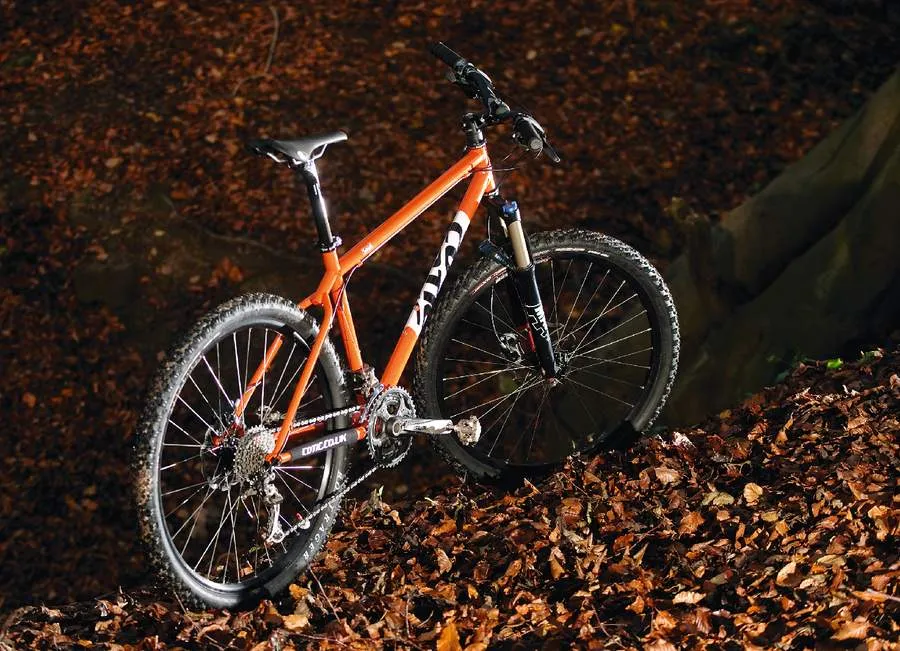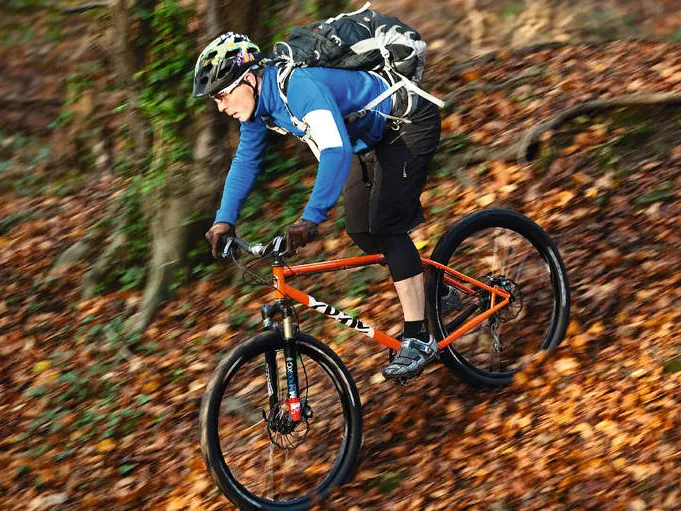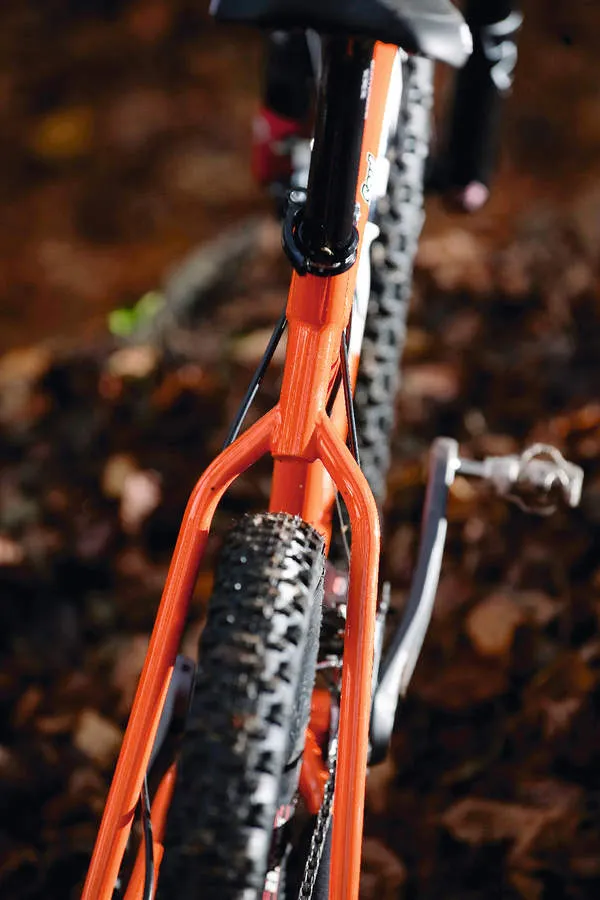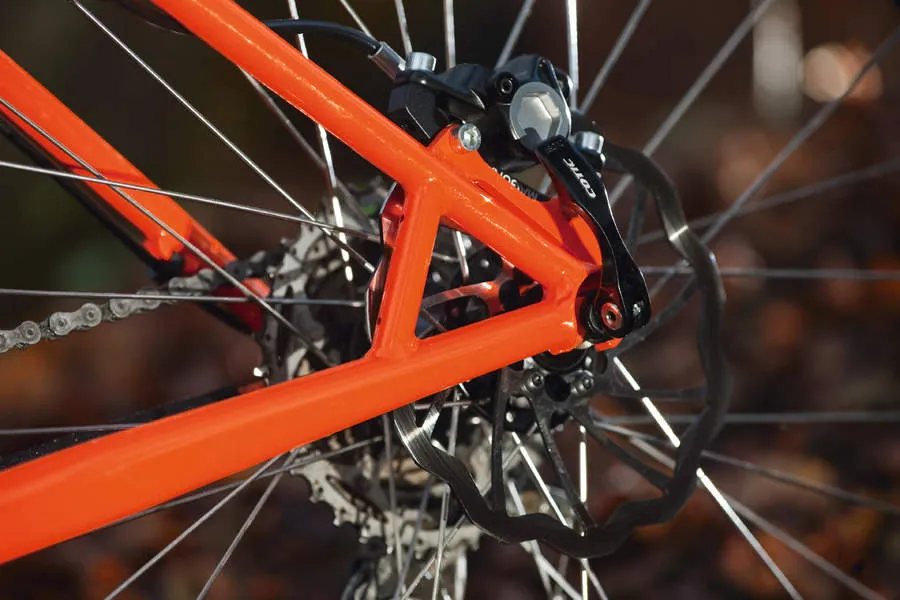The original Soul was one of the first long-forked hardtails to make its mark on the cross-country trail scene, at a time when anything with 100mm-plus of fork travel was generally regarded as a play bike.
The new one is designed to comply with CEN (Comité Européen de Normalisation) safety standards, and it has the potential to be a true trail master for almost any rider.
Our 24.4lb (11.07kg) test model with its 100mm-travel fork would be perfectly capable of dishing up a decent cross-country race result with a fast rider on board, and it’s at ease on the sort of twisty singletrack that most people regard as true mountain biking.
But plug a longer fork in, set it up soft and there’ll be times when you discover yourself getting pulled into the sort of riding that would usually demand 120mm of suspension out back too. It’s a bit pricier than some other decent steel frames, but we reckon it’s worth it.
Ride & handling: Captures the essence of hard and fast trail riding
The Soul is one of those rare bikes that just feels right, even when you’ve just climbed off something totally different. While the frame produces a perfect mix of control and resilience over all manner of terrain, careful finishing componentry choices also have a lot to do with the ride persona of the complete bike.
The Soul is at its best when fitted with big treads, a wide riser bar and a short stem: the 70mm one on our 17.5in bike was a perfect balance to the 23.25in top tube reach. A carbon seatpost helps to further soften the ride feel over chattery terrain after the skinny-rib wishbone stays have done their job.
It’s easy to underestimate the value of parts choices, right down to soft compound bar grips and carefully considered tyre pressures, but when a frame is designed as well as this you owe it to the bike to get everything else right.
Fork choice is a tricky one. For ‘ordinary’ cross-country trail riding a 100mm-travel fork is ideal, producing rock-steady-neutral steering with adequate shock absorption. With a 120mm- or 130mm-travel fork fitted, more sag is needed and you’ll find yourself riding with a bit more weight towards the front end, making maximum use of the fork travel and letting the rear wheel skip lightly across terrain the fork has just smoothed.
If you ride hard-hitting downhill trails and are willing to put up with lazier handling elsewhere, a 120mm or 130mm fork is ideal. A 140mm-travel fork demands about 40-50mm of sag to create decent singletrack handling on the Soul. For most riders, that results in a fork that’s too soft on climbs, or too long if you use a lockout. An adjustable travel fork or a DT Swiss model with a ‘lock-down’ function for climbs would be worth a look.

Frame: Tougher, updated Reynolds 853 steel chassis
To an untrained eye there’s really not much difference between the old Cotic and its latest incarnation, but all the tubes and joints that matter are designed to be just a little bit stronger in terms of impact resistance and long-term durability.
The new ‘Ovalform’ top tube is laterally stiffer than the old round top tube, which boosts tracking with the new generation of stiffer through-axle forks. But it’s also slightly more vertically compliant so it theoretically gives a boost to comfort too (although not as noticeably as more obvious softening factors such as tyre choice).
The Soul’s relatively skinny rear stays leave loads of room for big treads, while tiny gussets strengthen the outer join between the chainstays and the bottom-bracket shell. The Reynolds 853 mainframe gains a tough 631 head tube joined to nicely tapered gussets under the top tube and down tube. Designer Cy Turner says this configuration has allowed the Soul to comfortably exceed CEN standards with the maximum leverage of a 140mm-travel fork.
The slim 4130 chromoly wishboned seatstays remain as they were but the new cowled dropouts – with a replaceable gear hanger – are half the weight of the previous ones so, despite extra strengthening features, the overall frame weight ends up only slightly heavier than the previous version (the 17.5in frame weighs just under 4.5lb).
The geometry is the same as it was six years ago, when it effectively set the template for other longer-forked cross-country hardtails to mimic. It’s designed to be at its active best around 71° at the head tube and 73° at the seat, but with the Magura 100mm-travel fork left unsagged our test bike measured 68.5° degrees at the head and 70.5° at the seat with a 12.5in BB height. From those figures, projected geometry with a 120/130mm fork is spot on but you’d have to run very generous sag to get the best handling from a 140mm fork.
Cotic sell the Soul frame alone for £470, complete with Hope quick-release seat clamp and a neoprene chainstay protector. You get a colour choice (orange or black) plus five graphic panel colours to choose from.
Forks, headsets, seatposts, disc brakes and bottom brackets are also available from Cotic, but not complete bikes. Our test bike was finished with a Bontrager wheelset and big Jones XR treads, Bontrager bar, stem and post, Magura Marta brakes, Shimano SLX crankset and shifters, and an XT rear mech.
Tester says
Steve Worland: "Someone once asked me what my definition of ‘freeride’ was. To me, it’s not big drops and stunts: it’s riding a bike where input isn’t a struggle, a bike that almost seems to be riding itself. All you do is choose the direction, pedal and just go with the flow.
"Not many hardtail setups can manage that, but the Cotic Soul can. Since its inception, it has been the benchmark by which other long-forked cross-country trail riding hardtails have been judged. And it still is."






